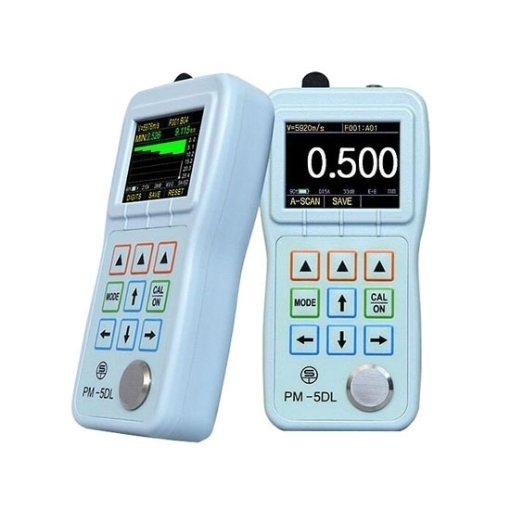In the world of non-destructive testing (NDT), ultrasonic thickness gauges play a pivotal role in accurately measuring the thickness of various materials without causing any damage. This advanced technology utilizes sound waves to provide precise measurements, making it a valuable tool in industries ranging from manufacturing and construction to aerospace and oil and gas. In this article, we will delve into the fascinating world of ultrasonic thickness gauges and explore how they function.
 Understanding Ultrasonic Waves
Understanding Ultrasonic Waves
Ultrasonic waves are high-frequency sound waves that are beyond the range of human hearing. These waves travel through materials, bouncing off interfaces between different layers and returning as echoes. The time taken for the echo to return provides crucial information about the thickness of the material being tested.
Basic Components of an Ultrasonic Thickness Gauge
- Transducer: The heart of the ultrasonic thickness gauge is the transducer. It emits ultrasonic pulses into the material and receives the echoes.
- Pulse Generator: This component produces electrical pulses that are sent to the transducer. These pulses generate ultrasonic waves.
- Receiver: The receiver amplifies and processes the echoes received from the transducer.
- Time Measurement System: The time taken for the ultrasonic wave to travel through the material and return is measured precisely.
- Display Unit: The measurement data is processed and displayed on the unit, providing users with real-time thickness readings.
How Ultrasonic Thickness Gauges Work
- Probe Placement: The operator places the transducer probe on the surface of the material being tested. A coupling gel is often used to ensure proper contact between the probe and the material.
- Pulse Emission: When the operator triggers the gauge, the pulse generator sends an electrical pulse to the transducer. The transducer converts this pulse into an ultrasonic wave that travels into the material.
- Wave Propagation: The ultrasonic wave travels through the material until it encounters an interface, such as the back wall of the material or a second layer within it.
- Echo Reception: At each interface, a portion of the ultrasonic wave is reflected back as an echo. The transducer receives these echoes.
- Time-of-Flight Calculation: The gauge calculates the time it takes for the ultrasonic pulse to travel from the transducer to the interface and back. This time, combined with the speed of sound in the material, helps determine the thickness.
- Display of Thickness: The gauge displays the thickness measurement on its screen, providing the operator with accurate and real-time information.
Advantages of Ultrasonic Thickness Gauges
- Non-Destructive Testing: Ultrasonic thickness gauges allow for non-destructive testing, preserving the integrity of the material being measured.
- Versatility: These gauges can measure thickness on a wide range of materials, from metals and plastics to composites.
- Accuracy: Ultrasonic thickness gauges offer high levels of accuracy, often within fractions of a millimeter.
- Efficiency: The speed of measurements and real-time display contribute to increased efficiency in various industries.
Applications of Ultrasonic Thickness Gauges
- Corrosion Monitoring: In industries like oil and gas, ultrasonic gauges help monitor corrosion in pipelines and tanks.
- Structural Integrity: They assess the thickness of structural components, ensuring safety in construction and aerospace.
- Quality Control: Manufacturers use ultrasonic gauges to monitor material thickness during production processes.
Ultrasonic thickness gauges sold at sisco are remarkable devices that leverage the power of sound waves to provide invaluable measurements without causing any harm. Their role in ensuring material integrity, safety, and efficiency across industries is truly commendable.

